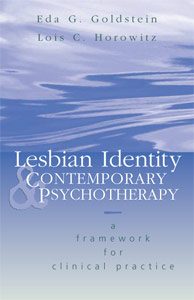 My coming out story
My coming out story
As a child growing up in the ’60s without visible role models, I was forced to face challenges that my straight friends didn’t have to think about. I had to continually find ways to understand and cope with my emerging LGBTQ identity.
I didn’t know how to define what I was feeling, I just knew my gender and sexual identity felt different from that of my mother and my sisters. I felt like an outsider.
Looking back, I see my self-identifying and coming out experience as a creative interpretive process that took considerable psychic strength and courage. I value and take pride in the fact that LGBTQ people, throughout history and today, continue to negotiate space for themselves in a world that resists their reflection.
By my teen years, I learned to find others who could be attuned to my needs and who could validate my unique strengths and struggles that arose from my living in a world where I could not be fully out.
Maybe the most important thing I learned was that —however you identify –there are others out there who can understand and support you.
My Treatment Approach to LGBTQ Clients
There is considerable variability in terms of the age LGBTQ people self-identify, come out to others, and the ways in which family members, friends, coworkers, and their communities regard and accept them.
These experiences impact how an individual feels about the world and how they become a part of a community, a couple, and their work environment.
Research shows that LGBTQ people are at a high risk of suicidal thoughts and psychological concerns as a result of discrimination, prejudice, and rejection— especially during the teen years.
That is why when treating an LGBTQ person, I pay special attention to the age and circumstances surrounding their self-discovery and coming-out processes.
Many LGBTQ people have grown up with a stigmatized identity—they were bullied in their family or school without help to cope with feelings of vulnerability.
Or, they were identified by others as being queer or trans before they had the cognitive ability to understand the meaning of an LGBTQ identity. Such experiences shape the nature and process of their sense of self and in adulthood may lead them to struggle with anxiety and feelings of shame.
This contrasts with people whose same-sex or non-conforming gender feelings emerge in adulthood. This group may have had less exposure to oppression in their developmental years, and their basic identity was formed prior to coming out.
That said, it is hard to generalize about the internal and external pressures LGBTQ people are caught between in this changing world.
Self-identifying and coming out can in many cases be a long process, sometimes taking several years.
In addition, there are some people who fall on a wider range of the gender and sexuality spectrum. For those who struggle with gender identity, it is important for them to have a space to discuss what having an identity that falls outside the traditional male/female dichotomy means for them.
Also, in spite of the growing changes in societal attitudes, LGBTQ individuals can at times experience feelings of loss with regard to not having the same support systems as heterosexual couples, especially in regard to having children and raising a family.
When treating LGBTQ patients, I am always mindful of the fact that they may have had more developmental tasks to negotiate.
Not all therapists have training in how to handle the various issues that are specific to our community. That is why some LGBTQ people may feel more comfortable seeing a therapist who is familiar with their self-experience and community.







